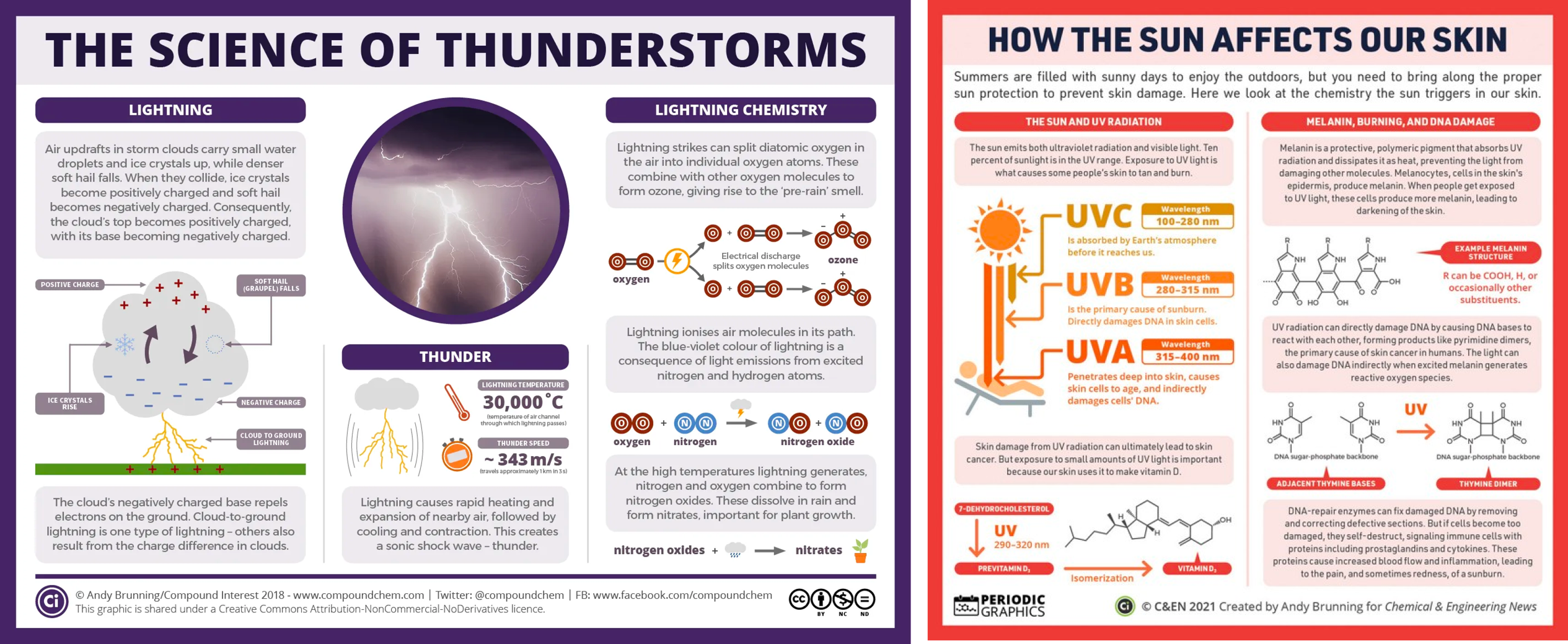Ci Newsletter #21: Heatwave science and rainbow pennies
Welcome to this fortnight's Ci newsletter! This time around we're reflecting on some of the chemistry related to the recent UK heatwave, seeing how a rainbow of hues can be produced from a copper penny, and examining how the same pigment can be red in one flower and blue in another.
Heatwaves and thunderstorms
We've been dealing with some sweltering temperatures here in the UK over the past week – well, sweltering for us, anyway! It brought to mind a previous edition of Periodic Graphics in C&EN, highlighting the unwanted chemistry that the sun can trigger in our skin. And there's a relevant graphic for the thunderstorms that followed the heatwave, too, explaining how lightning happens and some of the reactions it sets off in the air.
Rainbow pennies
Many of you have probably seen the 'golden penny' demonstration previously, in which a reaction turns copper coins into 'gold' – in reality brass, an alloy of copper and zinc. Here's a different twist on the same demonstration, in which copper coins are heated to form nanoscale layers of copper oxide, producing a range of hues.
More detail is available in Tom's paper on the demonstration, available here.
Cornflowers and roses
Cornflowers are blooming in my garden at the moment, and in looking up more detail on the pigments that make them blue, I made a surprising discovery: it's the same pigment that makes roses red.
The pigment, protocyanin, is an anthocyanin, which contributes colours to a wide range of flowers. The secret to its differing colour in roses and cornflowers is caused by protocyanin's interaction with iron and magnesium ions in the latter.
Upcoming national days
A few national days of note coming up over the next fortnight – when I say of note, I pretty much just mean that I have relevant graphics for them! National Avocado Day is coming up on the last day of July, for which this graphic on how to prevent avocado browning is pertinent.
Then it's National Watermelon Day on 3rd August, which pairs nicely with this graphic on watermelon colour, aroma, and what can make them explode.
Finally, it's International Beer Day on the first Friday in August, for which this graphic taking a broad look at beer chemistry is recommended.
Science communication email course
For any readers interested in developing their science communication skills, C&EN are currently running a 9-week newsletter series featuring contributions from a range of science communicators (myself included). The series will cover topics including infographics, videos, podcasts and data visualisations. You can sign up to get it in your inbox here.
Chemistry news & features
Faked Beta-Amyloid Data. What Does It Mean? — www.science.org
Derek Lowe offers a balanced perspective on the recent news that images in a key paper on amyloid and Alzheimer's disease, published in 2006, may have contained doctored images.
Chemically clumsy AI — cen.acs.org
A C&EN investigation finds that, unsurprisingly, AI image generators are lacking in chemical understanding.
As always, drop me an email by replying to this newsletter if you've any comments or suggestions for future editions.
Thanks for reading,
Andy








